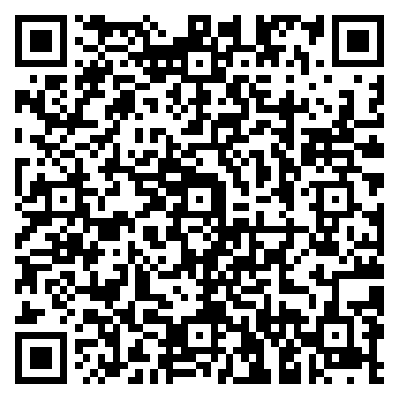

TOP

DNA sample
RNA samples are recommended to be stored below -80°CC. Short-term storage or transportation can be done using dry ice or liquid injustice. For long term transportation, construct the RNA immersion in 75% ethanol, using a sufficient amount of dry ice or blue ice delivery (2kg/day). Instructions.
1, RIN value determination.
1) Because plants will appear multiple ribosomal RNA bands, so sometimes the RIN value can not be read by the machine or the machine reading is wrong, at this time, we will be based on the Agjilent 210D electrophoresis to determine whether the sample is qualified. 2) For some special species, such as: ants/tide and other arthropods, fruit bad, fish, etc., the 28S MRNA will be modified into a relatively small fragment (generally the size and 18S is lower), the 28S MRNA will be modified into smaller pieces (generally the size and the 18S is lower), the 28S MRNA will be modified into smaller pieces (generally the size and 18S is lower). 18S phase is low), resulting in 285185 less than 1 month N value and the sample an inter-array dissolution situation is not special, such samples we will dig Agient210 electrophoresis graph to determine whether the sample is qualified.
3) For some specially treated materials, RIN value and sample degradation may not match, we will be based on the test results of the RIN value and degradation to determine.
4) For individual samples, the Agient2100 spectrum is not consistent with the agar cape gel electrophoresis band, which may be due to the influence of a certain component in the sample on the number of Ling of the instrument, and can not be reversed to the real band of the sample. At this time, we will determine whether the sample is qualified or not according to the agar capi electrophoresis pattern.
| Sequencing type | Type of library | Sample Request |
| Genome sequencing | Library of small fragments | Nucleic acid mass ≥200ng or more, concentration >10 ng/μl, volume >10 μl. Agarose gel electrophoresis DNA bands are clear with no degradation or slight degradation, no RNA and protein contamination, samples are clear, colorless, non-sticky, and free of insoluble matter. |
| Pacbio Library (10K library) | Nucleic acid mass ≥5μg or more, concentration >60 ng/μl, OD260/280 ratio 1.8-2.0, 260/230 ratio 2.0-2.2, ratio of Nanodrop concentration to Qubit concentration ≤2, samples are clear and colorless, no insoluble material; agarose gel electrophoresis DNA bands are clear and non-degradation, no RNA and protein contamination. | |
| Pacbio Library (20K library) | Nucleic acid mass ≥ 20 μg or more, concentration > 80 ng/μl, OD260/280 ratio of 1.8-2.0, 260/230 ratio of 2.0-2.2, Nanodrop concentration and Qubit concentration ratio ≤ 2, the sample is clear and colorless, no insoluble material; pulse electrophoresis DNA bands are clear, no degradation or slight degradation, more than 30kb, no RNA and protein contamination. No RNA and protein contamination. | |
| Macrogenome sequencing | The success rate of macrogenomic sample libraries is greatly affected by the source of samples and the content of impurities, and the success rate is lower than that of conventional gDNA libraries. | Nucleic acid mass ≥100ng or more, concentration >2 ng/μl, volume >10 μl. agarose electrophoresis band fragment size ≥500bp. |
| 16S/18S/ITS sequencing | For samples that meet the QC criteria (genomic concentration > 0.05ng/ul), 16S/18S/ITS sequencing also carries the risk of amplification failure. | Amplification results in volumes ≥15ul, amplification results in concentrations ≥10nM with normal 2100 peak plots, and genomic concentrations >0.05ng/ul. |
| Chromatin Immunoprecipitation Sequencing (ChIP-Seq) |
|
Nucleic acid mass ≥20 ng or more, concentration ≥1ng/μl, volume ≥10μl, main peak between 100-500bp Smear bands. The sample is clear and colorless, non-sticky, no insoluble material, no protein contamination. |
| Sequencing of exons | Genomic samples, virtually non-degradable (data size <50G) | Nucleic acid mass ≥300ng or more, concentration ≥2ng/μl, volume ≥10μl. Agarose gel electrophoresis bands are clear with no significant degradation or slight degradation, samples are clear and colorless, non-sticky, no insoluble material. |
| Genomic samples, essentially non-degraded (≥50G of data) | Nucleic acid mass ≥1μg or more, concentration ≥2ng/μl, volume ≥10μl. Agarose gel electrophoresis bands are clear with no significant degradation or slight degradation, samples are clear and colorless, non-sticky, no insoluble material. | |
| Special samples such as FFPE allow for a certain degree of degradation (data volume <20G) | Nucleic acid mass ≥400ng, concentration ≥4ng/μl, volume ≥10μl. agarose gel electrophoresis bands above 500bp. | |
| Specialized samples such as FFPE allow for a certain degree of degradation (data volume ≥ 20G) | Nucleic acid mass ≥ 1 μg, concentration ≥ 4 ng/μl, volume ≥ 10 μl. agarose gel electrophoresis bands above 500 bp. | |
| Amplicon sequencing | Small Fragment Direct Build (NEB) | Nucleic acid mass ≥50ng or more, concentration ≥2ng/μl, volume ≥10μl. fragment size between 100bp-500bp, sample is clear and colorless, non-sticky, no insoluble matter. |
| Needs to be interrupted (NEB) (fragment size >1000bp) | Nucleic acid mass ≥500ng or more, concentration ≥20ng/μl, volume ≥10μl. Agarose gel electrophoresis bands are clear without significant dispersion, samples are clear and colorless, non-sticky, no insoluble material. | |
| Insertion site detection |
|
Nucleic acid mass ≥400ng or more, concentration >10 ng/μl, volume >10 μl. Agarose gel electrophoresis DNA bands are clear with no degradation or slight degradation, no RNA and protein contamination, samples are clear, colorless, non-sticky, and free of insoluble matter. |
| Simplified amplicon |
|
Nucleic acid mass ≥150ng or more, concentration ≥10ng/μl, fragment size between 100bp-500bp (including bypass primers) single band. |
|
Ampliseq-CRISPR(on/off target) |
|
Nucleic acid mass ≥200ng*N or more, N is the number of detection sites, concentration ≥20ng/μl, volume ≥10μl, between OD260/2801.8-2.0. |
|
gEdit-Screen |
|
Plasmid: nucleic acid mass ≥100ng, concentration ≥10ng/μl, agarose electrophoresis detected no degradation or mild degradation between OD260/2801.8-2.0. DNA: Nucleic acid mass ≥N*X*0.07μg, concentration ≥200ng/μl, agarose electrophoresis detected no degradation or mild degradation between OD260/2801.8-2.0. PCR product: nucleic acid mass ≥50ng, concentration ≥10ng/μl, single band. |
| Library samples |
|
The concentration of the bulk library is greater than 3 nM (qPCR quantitative concentration), the concentration of the packaged Lane library is greater than 5 nM (qPCR quantitative concentration), the volume is not less than 15 μl and the sample does not contain magnetic beads, and the libraries are compatible with the corresponding sequencing platforms. Other precautions: 1)DNA libraries are dissolved in Illumina Resuspension Buffer (RSB) or appropriate buffer of other brands of library building kits. 2)Provide species information, fragment size, library building method, Agilent 2100 Bioanalyzer QC plot, and Qubit results. 3)HiSeq library size between 300bp-500bp, MiSeq library size between 300 bp-600 bp, no primer dimer and junction dimer). |
Direct delivery by courier (SF).
If there is no sample box near your location, or your starting material needs to be kept on dry ice, please use courier service, e.g., SF Express, and attach a printed copy of the “Junnavel BioGS Project Sample Delivery Information Form” and fill in the relevant information in the material.
Please mail the sample to:

Attn:

Shipping address

zip code

Receiving telephone number
RNA samples
RNA samples are recommended to be stored at -80°C or below. Dry ice or liquid nitrogen can be used for short-term storage or transportation. For long term transportation, it is recommended to precipitate RNA in 75% ethanol and use sufficient dry ice or blue ice for transportation (2 kg/day). Instructions:
| 测试 | 测试 |
| 测试 | 测试 |
| 测试 | 测试 |

Attn:

Shipping address

zip code

Receiving telephone number
Tissue samples

Attn:

Shipping address

Zip code

Receiving telephone number